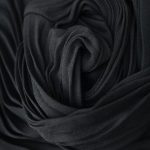Are you tired of dealing with crumpled, wrinkled pleated skirts? Mastering the art of ironing pleated skirts can be a game-changer for your wardrobe.
With the right techniques, you can achieve perfectly crisp pleats without causing damage to the fabric. Understanding the fabric types, preparing the ironing surface, setting the right temperature, using a pressing cloth, and addressing stubborn wrinkles are all essential steps in achieving flawless results.
Additionally, knowing the specific tips for different fabric types will help you become a pleated-skirt ironing pro. Get ready to elevate your wardrobe by learning the pleated skirt ironing tips that will leave you looking polished and put-together every time.
Key Takeaways
- Different pleat constructions require specific iron temperatures.
- Always consult the fabric care label for specific instructions.
- Use a pressing cloth to protect the fabric while ironing.
- Test the fabric's heat sensitivity and adjust the iron temperature accordingly.
Understanding Fabric Types
When ironing pleated skirts, you should first understand the fabric types to ensure proper care and maintenance. Understanding pleat construction is crucial in preserving the integrity of the pleats. Fabric care techniques vary depending on the fabric type, so it's essential to identify the material of your pleated skirt before ironing.
Some common pleat constructions include accordion pleats, box pleats, and knife pleats. Each type requires specific care to maintain its shape and form. Accordion pleats, for instance, are delicate and may require lower iron temperatures to prevent damage. Box pleats, on the other hand, can withstand slightly higher heat but should still be approached with caution. Knife pleats often necessitate gentle pressing to avoid flattening.
When it comes to fabric care techniques, synthetic materials like polyester may require lower heat settings to prevent melting or scorching, while natural fibers such as wool or silk may necessitate steam or a pressing cloth to avoid shine or burn marks. It's imperative to consult the fabric care label and adjust the ironing method accordingly to ensure the longevity of your pleated skirt.
Preparing the Ironing Surface
Before you start ironing your pleated skirt, it's important to prepare the ironing surface properly.
Make sure to heat the ironing surface evenly to avoid any uneven creases in the fabric.
Using an ironing board cover will also help protect your fabric and ensure a smooth ironing experience.
Heat Ironing Surface Evenly
To achieve perfectly ironed pleats, ensure your ironing surface is heated evenly before beginning. Start by setting your ironing board on a flat, stable surface. Avoid using an uneven or padded surface as it can lead to heat distribution issues, resulting in unevenly ironed pleats.
If your ironing board is padded, place a thin, heat-resistant cloth over it to create a smooth, even surface. Preheat your iron to the appropriate temperature for the fabric of your pleated skirt. Once the ironing surface is evenly heated, you can proceed with the ironing technique.
This preparation ensures that the pleats are ironed uniformly, avoiding any creases or unevenness. Taking the time to prepare the ironing surface will contribute to achieving a professional and polished finish.
Use Ironing Board Cover
Ensure the ironing board cover is smooth and heat-resistant to provide a suitable surface for ironing your pleated skirt. A wrinkled or damaged cover can cause creases in your skirt.
Start by setting up your ironing board cover, ensuring it's clean and free from any residue. Smooth out the cover to eliminate any wrinkles that could transfer onto your fabric.
It's important to use a heat-resistant cover to prevent scorching and damage to your skirt. Always check the manufacturer's instructions for the recommended heat settings and use a cover that can withstand the appropriate temperature.
Setting the Right Temperature
Before you start ironing your pleated skirt, it's crucial to set the right temperature for the fabric. Different fabrics have varying heat tolerances, so adjust your iron's temperature accordingly.
To ensure you don't damage the fabric, it's always a good idea to test the heat sensitivity on a small, inconspicuous area before ironing the entire skirt.
Fabric Heat Tolerance
When ironing a pleated skirt, you should adjust the temperature according to the fabric's heat tolerance to prevent damage. Proper fabric care and heat management are crucial to maintain the quality of your pleated skirt. Using the wrong ironing temperature can lead to irreversible damage such as scorching or melting the fabric. To help you navigate through the varying heat tolerances of different fabrics, here's a guide to setting the right iron temperature:
| Fabric Type | Heat Tolerance |
|---|---|
| Cotton | Medium to High |
| Silk | Low to Medium |
| Polyester | Low to Medium |
Understanding your fabric's heat tolerance is essential for achieving wrinkle-free perfection without compromising the fabric. Always refer to the care label or fabric guidelines for specific ironing instructions.
Iron Temperature Adjustment
Adjust the iron temperature based on the fabric's heat tolerance to ensure proper pleated skirt care.
Different fabrics require different heat settings to prevent damage and maintain the pleats. Use a low temperature for delicate fabrics such as silk or chiffon to avoid scorching or melting the fibers. Medium heat is suitable for synthetic fabrics like polyester, while cotton and linen can withstand higher temperatures.
Always check the care label on the garment for specific ironing instructions. When ironing, move the iron gently over the pleats using a press and lift motion to avoid flattening them. In addition, consider using a pressing cloth to protect the fabric from direct contact with the iron.
Proper iron temperature adjustment is crucial for maintaining the integrity of the pleats and ensuring effective fabric care.
Testing Heat Sensitivity
To determine the appropriate iron temperature for your pleated skirt, test the heat sensitivity of the fabric using a small inconspicuous area. Begin by using these testing methods:
- Water Test: Dampen a small section of the fabric with water and press it with the iron at a low temperature. If the fabric wrinkles or puckers, it's heat-sensitive.
- Colorfastness Test: Place a white cloth over the pleated skirt and iron it. If any color transfers to the cloth, the fabric may not withstand high heat.
- Manufacturer's Instructions: Check the care label for heat sensitivity indicators such as recommended iron temperature or 'do not iron' symbols.
Using a Pressing Cloth
For best results, always use a pressing cloth when ironing a pleated skirt to protect the delicate fabric from direct heat and prevent any shine or burn marks. A pressing cloth acts as a barrier between the iron and the fabric, ensuring that the heat is distributed evenly and preventing any damage to the pleats or fabric surface. Here are some tips for using a pressing cloth effectively:
| Proper Technique | Common Mistakes |
|---|---|
| Use a clean, lint-free cotton cloth | Using a pressing cloth that is dirty or has residue from previous use |
| Dampen the cloth slightly to provide steam and moisture | Using too much water, which can cause water stains on the fabric |
| Place the pressing cloth over the pleats and iron lightly | Pressing too hard, which can flatten the pleats or leave imprints on the fabric |
| Lift and reposition the pressing cloth as you move along the skirt | Keeping the pressing cloth stationary, which can cause uneven ironing |
Ironing Pleats With Care
Carefully lift the pressing cloth and gently iron the pleats in a downward motion, ensuring that you don't apply too much pressure. When ironing pleats, it's crucial to handle the delicate fabric with care to maintain the integrity of the pleats.
Here's how to iron pleats with the utmost care:
- Use a low to medium heat setting: To avoid damaging the fabric and ensure pleat maintenance, set your iron to a low to medium heat. High heat can cause the pleats to flatten out, ruining the garment's structure.
- Work slowly and methodically: Take your time when ironing pleats, and move the iron in a gentle, downward motion. Rushing through this process can lead to crease preservation issues and may result in unevenly pressed pleats.
- Avoid direct contact with the iron: To prevent damaging the pleats, always use a pressing cloth when ironing. This protective barrier ensures that the pleats aren't directly exposed to the heat of the iron, maintaining their crisp and neat appearance.
Addressing Stubborn Wrinkles
Gently smooth out stubborn wrinkles in your pleated skirt by lightly misting the fabric with water before ironing. This technique can work wonders in releasing those pesky creases. The moisture from the mist will help relax the fabric fibers, making it easier to smooth out the wrinkles with the iron. Be sure not to oversaturate the fabric; a light misting is all that's needed.
In addition to misting the fabric, another quick fix for stubborn wrinkles is to use troubleshooting techniques such as adjusting the heat setting on your iron. For natural fibers like cotton or linen, a higher heat setting may be necessary to effectively remove wrinkles. However, for synthetic fabrics, a lower heat setting is recommended to prevent damage. Always test a small, inconspicuous area of the fabric first to ensure that the heat setting is appropriate.
Finishing Touches and Storage
To maintain the pleats in your skirt and keep it looking its best, proper storage in a well-ventilated area is essential. Here are some essential tips for finishing touches and storage:
- Hang It Right: Use a skirt hanger with clips to hang your pleated skirt. Make sure the clips are padded to avoid leaving marks on the fabric. Hanging the skirt will help maintain the pleats and prevent wrinkles.
- Avoid Compression: Avoid folding your pleated skirt if possible, as this can cause the pleats to become flattened and difficult to restore. If folding is necessary for storage, gently fold the skirt along the pleats and store it in a breathable garment bag.
- Cool and Dry: Store your pleated skirt in a cool, dry place away from direct sunlight. Excessive heat and moisture can damage the fabric and weaken the pleats. Consider using silica gel packs in the storage area to absorb any excess moisture and protect the fabric.
Additional Tips for Specific Fabrics
When ironing a pleated skirt made of delicate fabrics, such as silk or chiffon, take extra care to prevent damage to the fabric.
For silk chiffon, set your iron to a low heat setting and place a pressing cloth over the fabric to avoid direct contact with the iron. Glide the iron gently over the pressing cloth, using quick and light movements to prevent crushing the delicate pleats. Avoid leaving the iron in one place for too long to prevent scorching or weakening the fabric.
For wool crepe, use a slightly higher heat setting on your iron, and steam the fabric lightly to help relax the fibers and remove any creases. Always iron the wool crepe on the reverse side to prevent shine or damage to the delicate surface. Use a pressing cloth if necessary to further protect the fabric.
Remember to always check the care label on your pleated skirt to ensure you're using the appropriate heat settings and ironing techniques for the specific fabric. With these tips, you can confidently care for and maintain the pristine look of your pleated skirts made from delicate fabrics.
Frequently Asked Questions
Can I Use Steam When Ironing Pleated Skirts Made of Delicate Fabrics?
When ironing delicate fabrics like pleated skirts, using steam can help prevent flattening. It's important to maintain a safe distance from the fabric and use a low heat setting to protect the pleats.
How Can I Prevent Pleats From Becoming Flattened During the Ironing Process?
To prevent flattening of pleats during ironing, use the right ironing technique. Gently press along the pleats instead of directly on them. Avoid using too much heat and opt for a lower setting.
Are There Any Specific Techniques for Ironing Pleats on Skirts Made of Synthetic Fabrics?
When ironing synthetic fabric, use low heat to avoid damage. For pleats, place a damp cloth over them and press gently. Always check the label for specific care instructions. These ironing techniques ensure pleat care and maintenance.
What Should I Do if the Pleats on My Skirt Become Misshapen After Ironing?
If the pleats on your skirt become misshapen after ironing, try using a handheld steamer to gently reshape them. Avoid machine washing and opt for hand washing to maintain the pleats. When storing, hang the skirt to keep the pleats intact.
Are There Any Special Considerations for Ironing Pleated Skirts Made of Metallic or Embellished Fabrics?
When ironing metallic or embellished pleated skirts, special care is crucial. Use low heat and a pressing cloth to protect delicate details. Gently press the fabric, avoiding direct contact with embellishments. This ensures proper fabric care.
- The History and Evolution of Chamois Fabric - June 22, 2025
- Chamois Fabric on Wikipedia: What You Need to Know - June 22, 2025
- How to Pronounce Chamois Fabric Correctly - June 22, 2025







